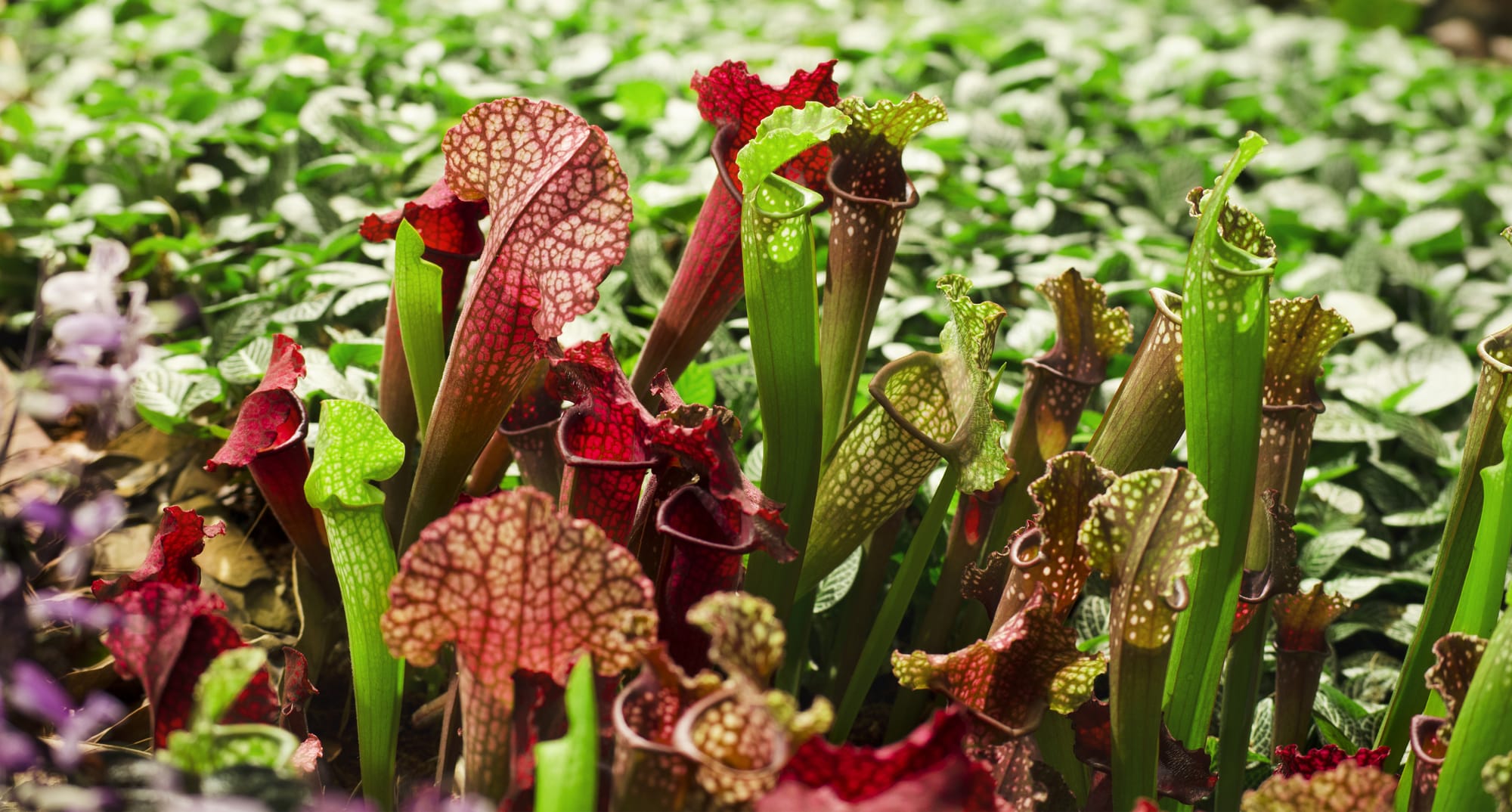Carnivorous plants unite under a singular banner: an insatiable yearning to augment their meager nutrient intake by ensnaring unsuspecting prey. This drive propels them into the most unforgiving sanctuaries, where survival becomes an art form.
Our journey commences amidst the ethereal coastal wetlands of northern California, where the enigmatic Darlingtonia californica, known as the ►
Carnivorous plants unite under a singular banner: an insatiable yearning to augment their meager nutrient intake by ensnaring unsuspecting prey. This drive propels them into the most unforgiving sanctuaries, where survival becomes an art form.
Our journey commences amidst the ethereal coastal wetlands of northern California, where the enigmatic Darlingtonia californica, known as the cobra lily, holds court. These serpent-like botanical wonders flaunt pitcher-shaped leaves adorned with otherworldly, translucent windows, luring hapless insects into a mesmerizing trap of doom. Within these carnivorous chambers, nectar and vibrant hues beckon, betraying their sinister intent as prey succumbs to the digestive embrace of the cobra lily.
Venturing south to the enigmatic coastal plains of the Carolinas, we unveil the infamous Venus flytrap (Dionaea muscipula), a carnivorous icon with razor-sharp, hinged jaws. Triggered by unsuspecting wanderers, these toothed leaves snap shut with a malevolent swiftness that belies nature's malevolence. In milliseconds, the Venus flytrap launches its ruthless digestive ballet, stripping vital sustenance from its ensnared quarry.
Our journey takes an eerie twist to the southeastern United States, where the Sarracenia genus, known as pitcher plants, reigns supreme. These botanical chameleons display an astonishing array of hues and forms that mesmerize insects with their seductive scents and beguiling shapes. Lured by these deceptive charms, insects plummet into the clutches of fluid-filled pitchers, where their fate is sealed by drowning and digestion.
Traversing continents and spanning entire ecosystems, we descend upon Southeast Asia, a hotbed of Nepenthes diversity. These tropical marvels, often called tropical pitcher plants, sport an exotic variety of forms and adaptations. From dangling pitchers ensnaring arboreal insects to terrestrial traps capturing terrestrial prey, the Nepenthes genus reveals nature's boundless creativity in the pursuit of sustenance.
The global odyssey of carnivorous wonders is complete with exploring the sundews (Drosera). Scattered across every continent except the frigid Antarctic, these carnivorous charmers employ a sticky, mucilaginous strategy. Glistening with tentacles that ooze captivating secretions, they create a lethal labyrinth for unsuspecting insects. Once trapped, victims succumb to a slow, enveloping demise within the sundew's mucilaginous clutches.
Carnivorous plant hotspots manifest on nearly every continent, from the steamy jungles of South America to the desolate moorlands of Europe and the mist-shrouded heights of Asia. Each locale harbors a unique ensemble of carnivorous actors, each playing its part in the intricate dance of predation within its distinct ecosystem.
While carnivorous plants are resilient survivors, they face threats from habitat loss, illicit harvesting, and the relentless march of climate change. The mantle of conservation rests heavily upon our shoulders, as we must protect these botanical wonders. Initiatives to safeguard their habitats, propagate endangered species, and enlighten the masses about their significance are pivotal to preserving these beguiling organisms for future generations.
◄
